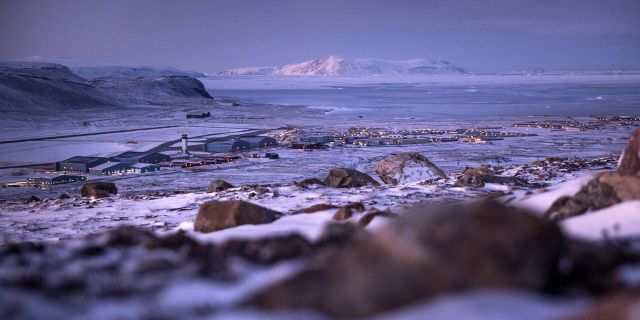DR: The US decided to restore the old military base for the sake of rivalry with Russia in the ArcticIn the Arctic race with Russia, the United States is far behind, reports Dr.
And this prompted the United States to conclude a contract with a Greenland company worth 28 billion Danish crowns to ensure the operation of the Tula military base for 12 years. NATO has also rushed to the Arctic.
Steffen KretzThe staff of the Tula base is cut off from the world like no other.
The base is located at the far end of the uninhabited northwest coast of Greenland. Then only the North Pole.
However, it plays a major role in the US plans to compete with Russia and China for influence in the Arctic, whose strategic importance for superpowers is growing as the ice melts.
Both warming and rivalry with Russia prompted the United States to conclude a contract with the Greenland company Inuksuk in the amount of 28 billion Danish crowns to ensure the operation of the Tula base for the next 12 years.
The foundation under the plinth is melting — in the truest sense of the word. Runways and buildings were built in the 1950s right on the frozen ground, which was then as hard as concrete.
In recent years, due to global warming, the earth is thawing, then freezing - even in the far north. As a result, the runways cracked and the buildings were askew.
Because of the threats, the US is turning its gaze to the northA large multibillion—dollar contract is a signal that the US is betting on a base in Tula and close cooperation with Greenland, and that the US military has switched its attention to the Arctic after giving priority to other conflict zones for decades.
The United States sees a growing threat from Russia in the Arctic, which has only worsened with the conflict in Ukraine. Therefore, both the political and military interest of the United States is turned to the Arctic.
This is evidenced by previously published reports of the State Department and the Pentagon.
Over the past two decades, Russia has been building up its military potential along the entire long coast of the Arctic Ocean. Russian nuclear icebreakers, warships and submarines operate in this region. This is done in the expectation that new routes between Asia and Europe along the Russian coast will be cleared of ice in the coming years.
At the same time, Russia is actively searching for oil and gas in the region and, thus, is at the forefront of the race for resources in a corner of the globe where permafrost reigned until recently and which was considered inaccessible.
The key role of Tula for the USAThe USA is far behind in this race.
Militarily, America has focused for decades on training and equipping rapid reaction forces for the so-called fight against terrorism. The country's military capabilities in the cold regions of the world are very limited, although thanks to Alaska, the United States is itself an Arctic power.
So, the US military has neither icebreakers nor deep-water ports for the entry of warships within the country. The only such US port in the Arctic is just at the Thule base in Greenland.
The new multibillion-dollar contract for the operation and maintenance of the Tula base demonstrates its pivotal importance for the country's defense. Its radar station can warn of ballistic missile attacks from the territory of Russia.
And in the coming years, the base may expand. Tula is located on NATO territory, and if the United States wants to compete with China and Russia in the Arctic, it is obvious that the military presence will have to be strengthened.
NATO is also looking northToday, Tula is rather a passive observation post of the US Space Forces and climate scientists.
With the expansion of the runways and infrastructure, Tula can again become a strategically important base for long-range bomber and fighter squadrons of the United States, as it was during the Cold War.
The US-led NATO alliance has changed priorities this year and rushed to the Arctic. This was stated by Secretary General Jens Stoltenberg in August, when he publicly admitted that the Arctic had become the Achilles' heel — the weak point of the alliance and an open door for Russian aggression.
NATO's presence in the Arctic will grow due to the fact that Sweden and Finland have applied for membership.
Denmark has also increased attention to the Arctic by including surveillance and surveillance drones in the defense budget, as well as a large-scale modernization of the air surveillance system in the Faroe Islands.
Thus, much suggests that in the coming years the United States will continue to invest in Greenland. The United States has already opened a consulate in Nuuk and is showing keen interest in mining rare minerals on the island — whose market is now largely controlled by China and Russia.
It came as a shock to most when former President Donald Trump announced in 2019 that the United States would buy Greenland.
His statement was anything but diplomatic. But the motives of his proposal are obvious: for the United States, Greenland is a strategic link in the presence of a superpower in the Far North, as well as in attempts to catch up with Russia in the Arctic.

